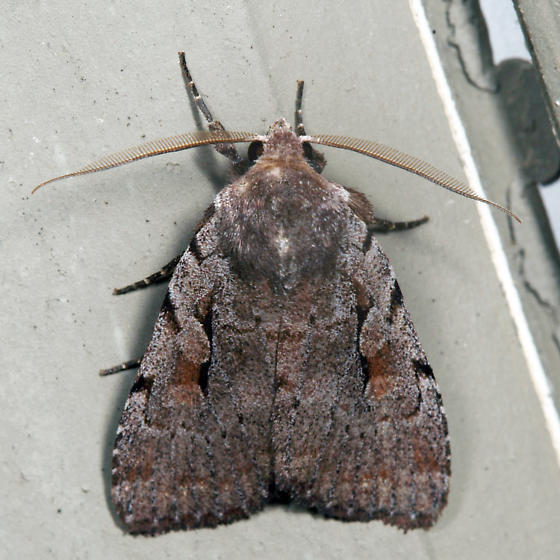Map Snapshot




17 Records
Relationships
Host plants include Eastern Hemlock.
Seasonality Snapshot
Source: Wikipedia
| Xestia badicollis | |
|---|---|

| |
| Scientific classification | |
| Domain: | Eukaryota |
| Kingdom: | Animalia |
| Phylum: | Arthropoda |
| Class: | Insecta |
| Order: | Lepidoptera |
| Superfamily: | Noctuoidea |
| Family: | Noctuidae |
| Genus: | Xestia |
| Species: | X. badicollis
|
| Binomial name | |
| Xestia badicollis Grote, 1873[verification needed]
| |
| Synonyms | |
| |
Xestia badicollis, the northern variable dart, northern conifer dart or white pine cutworm when referring to the larval stage, is a moth of the family Noctuidae. The species was first described by Augustus Radcliffe Grote in 1873. It is found in North America from Nova Scotia to North Carolina, west to Missouri and Ontario.
It is part of the elimata species group. Three of the species in this group (Xestia praevia, Xestia elimata and Xestia badicollis) have no significant difference in genitals nor DNA, suggesting they may be a single species.
This wingspan is 32–45 mm. The moth flies from July to October depending on the location. There is one generation per year.
The larva feeds on eastern white pine and less frequently on balsam fir, eastern hemlock, eastern larch, white spruce and other conifers.
References
[edit]- Wagner, David L.; Schweitzer, Dale F.; Sullivan, J. Bolling & Reardon, Richard C. (2011). Owlet Caterpillars of Eastern North America. Princeton University Press. ISBN 978-0691150420.
- Murray, Tom (September 7, 2018). "Species Xestia badicollis - Northern Variable Dart - Hodges#10968". BugGuide. Retrieved March 24, 2020.
- "White Pine Cutworm (Xestia badicollis)". BugwoodWiki. Retrieved March 24, 2020.
